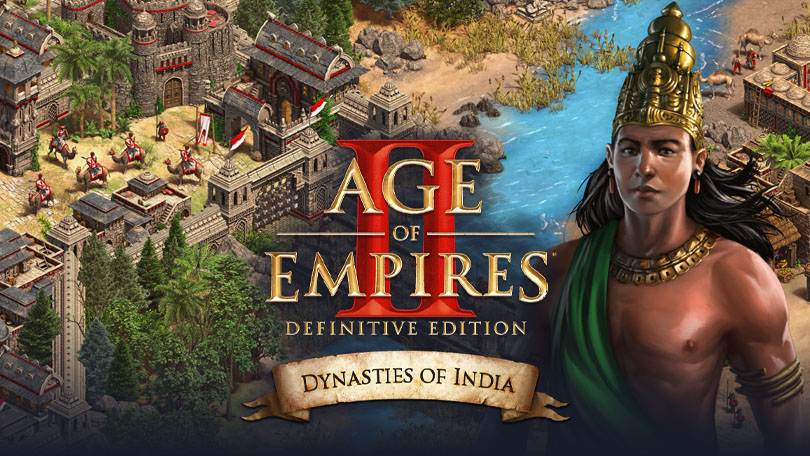
Greetings, Age of Empires Community,
In conjunction of the introduction of the Dynasties of India civilizations, the Age team would like to bring you along on the journey taken to carefully select and develop each of the civilizations. The Bengali, Dravidian, and Gurjara civilizations have a rich and extensive history, making them a wonderful addition to Age of Empires II: Definitive Edition. These civilizations are among some of the most influential to exist during this time period, making them a perfect and unique fit for the limited scope of the PDLC (paid downloadable content).
Before we jump in, we would like to start by defining what a linguistic group is, as our civilizations’ names are inspired by linguistic groups and regional expressions with the intent of maximizing the inclusivity featured in game. Linguistic groups denote a series of related languages spoken throughout a region by a variety of peoples. These languages grew increasingly diverse over time but remained a significant part of the definition of identity, especially when considering and interacting with neighboring cultures. Now that we have defined what a linguistic group is, let us learn a little bit more about our new civilizations.
Bengali Civilization:
- The Bengali people are situated mainly in the beautiful green, mountainous landscape of Bengal, as well as in areas of northeastern Southeast Asia.
- This group speaks various dialects of Bangla, whose development is likely attributed to the region’s unique and diverse origins.
- The Bengalis historically practiced three main religious systems: Hinduism, Buddhism, and Islam. The latter’s establishment gradually led to the decline of Buddhism, which remains a minority religion there.
- The 9th century Pala Emperor Devapala, who was considered the region’s most powerful ruler due to his successful efforts to expand his empire, inspired the Devapala campaign.
Dravidian Civilization
- The Dravidian civilization is based on the Dravidian language family. The term “Dravidian” encompasses 70+ different languages in South India spoken by a total of over 200 million people.
- This umbrella term in its original form (drāviḍa) is attested at least as far back as classical Sanskrit literature from the 3rd century BCE. In these sources, the term “Dravidian” generally denotes Southern Indian regions and their inhabitants. In later centuries, the term was also used to explicitly describe languages.
- While developing the Dravidian civilization, the immense variety and intricacies of ethnographic, linguistic, and geographic groups were carefully explored and evaluated to represent the millions of people under these subgroups. For example: the inspiration behind the Rajendra campaign comes from the period of the Chola Dynasty (4th century BCE to 1279 CE). Although the ruling class of the Chola Dynasty spoke Tamil, a member of the broader Dravidian language family, this region was filled with diversity in languages, cultures, identities, and more.
- Other significant aspects behind the Dravidian civilization design include but are not limited to the Urumi, a weapon that was developed in modern-day Kerala; a Castle based primarily on Golconda Fort in Hyderabad along with some influences from fortresses in Karnataka; and the numerous military, scientific, and technological advancements of the Vijayanagara Empire (14th – 17th centuries CE).
Gurjara Civilization
- This civilization is inspired by powerful medieval states that ruled the north and west of the Indian subcontinent – especially in the modern-day regions of Gujarat and parts of Rajasthan.
- These states’ primary languages were earlier forms of Gujarati. There is evidence pointing at early settlements in the Gujarat region, some dating as far back as the Stone Age.
- During the medieval period, the formidable Gurjara-Pratihara Dynasty (8th -11th centuries CE) dominated much of Northern and Western India.
- In game, the Gurjara civilization benefits from several new economic bonuses that were inspired by the Gujarat region’s powerful agricultural and economic landscape.
The Age of Empires team hopes this summary of our development process offers insight into the detailed and extensive process behind making the Dynasties of India expansion among the best in the game.
The Age of Empires Team